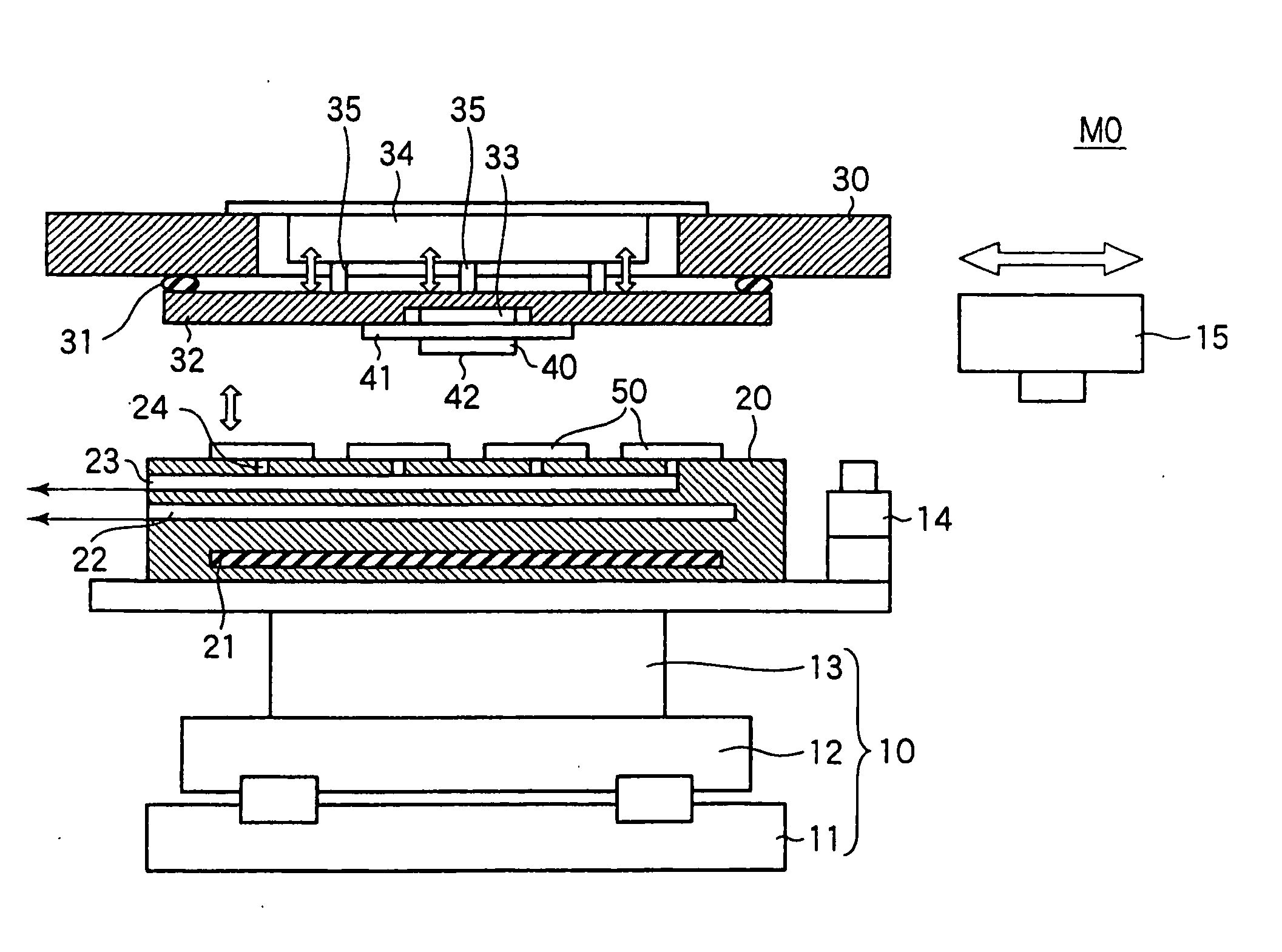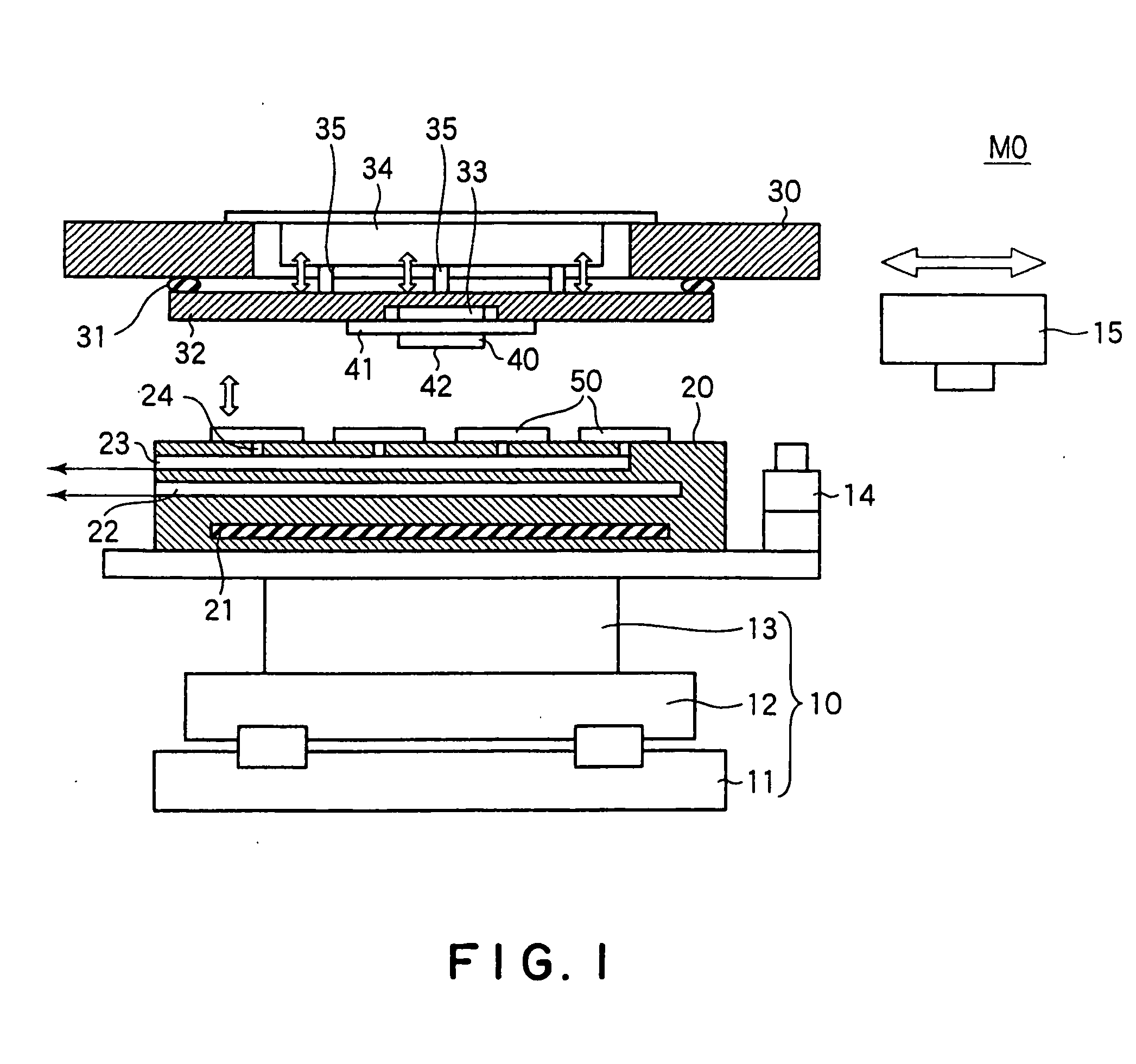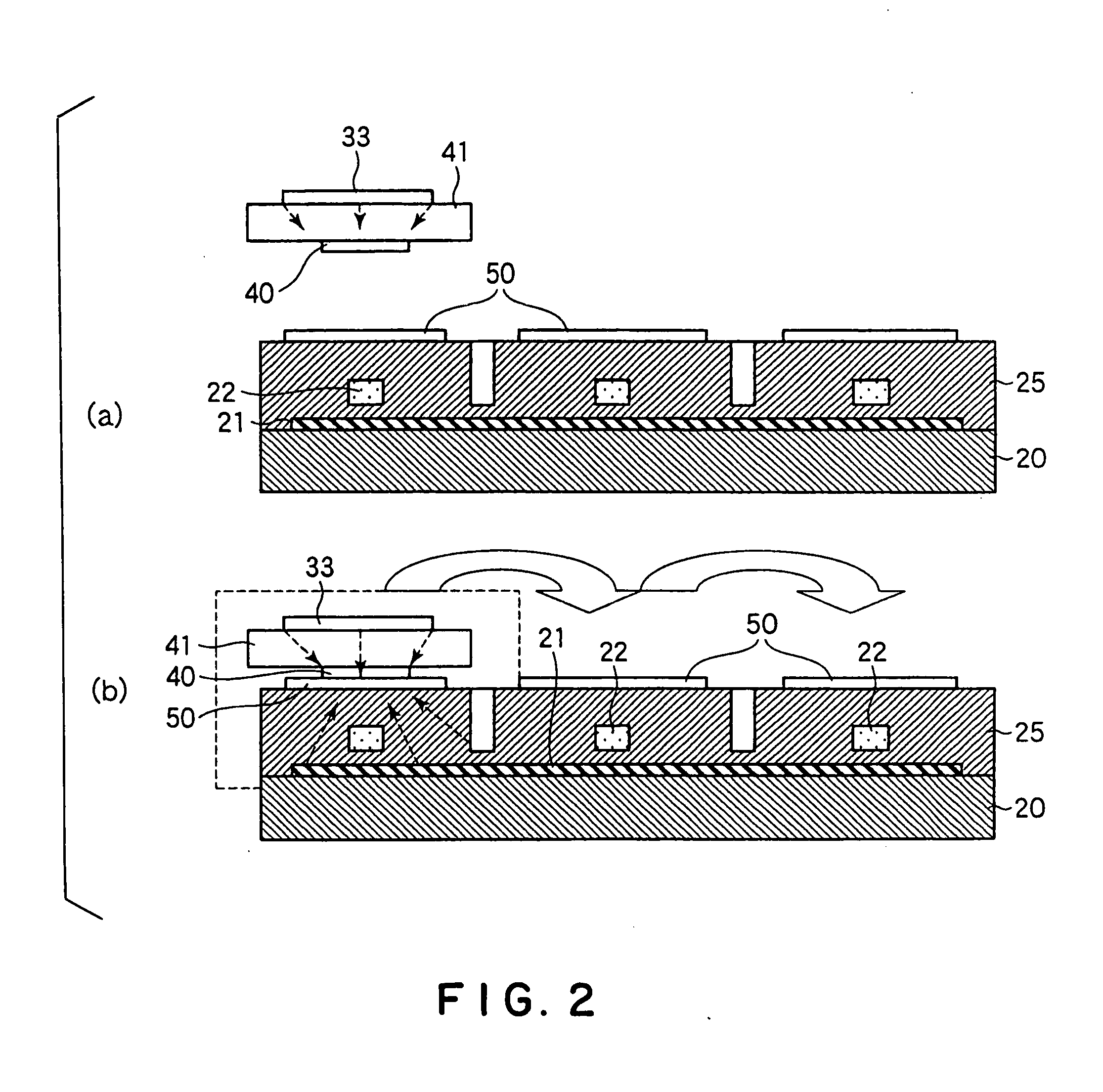Imprinting method and imprinting apparatus
a printing method and printing apparatus technology, applied in the direction of photomechanical apparatus, instruments, semiconductor/solid-state device details, etc., can solve the problems of high frequency noise generated when an electrical potential falls, reduced wiring density, and reduced throughput, so as to improve throughput and improve positioning precision
- Summary
- Abstract
- Description
- Claims
- Application Information
AI Technical Summary
Benefits of technology
Problems solved by technology
Method used
Image
Examples
first embodiment
[0042] the present invention is initially described referring to FIGS. 1 to 4.
[0043] An imprinting apparatus M0 in the first embodiment shown in FIG. 1 includes a positioning mechanism 10. The positioning mechanism 10 is provided with a Y-axis table 11, an X-axis table 12, and a Z-axis table 13, which are stacked in a vertical direction. The Y-axis table 11 and the X-axis table 12 are moved in a horizontal plane in directions perpendicular to each other. The Z-axis table 13 disposed on the Y-axis table 11 and the X-axis table 12 is moved upward and downward.
[0044] A chuck stage (holding table) 20 is disposed on the positioning mechanism 10. The chuck stage 20 is capable of rotating about the Z-axis in a θ rotational direction. Displacement of the chuck stage 20 in the horizontal plane is controlled by displacement of the Y-axis table 11 and the X-axis table 12 of the positioning mechanism 10, while displacement of the chuck stage 20 in the vertical direction is controlled by displa...
PUM
| Property | Measurement | Unit |
|---|---|---|
| temperature | aaaaa | aaaaa |
| temperature | aaaaa | aaaaa |
| pressing force | aaaaa | aaaaa |
Abstract
Description
Claims
Application Information
 Login to View More
Login to View More - R&D
- Intellectual Property
- Life Sciences
- Materials
- Tech Scout
- Unparalleled Data Quality
- Higher Quality Content
- 60% Fewer Hallucinations
Browse by: Latest US Patents, China's latest patents, Technical Efficacy Thesaurus, Application Domain, Technology Topic, Popular Technical Reports.
© 2025 PatSnap. All rights reserved.Legal|Privacy policy|Modern Slavery Act Transparency Statement|Sitemap|About US| Contact US: help@patsnap.com



